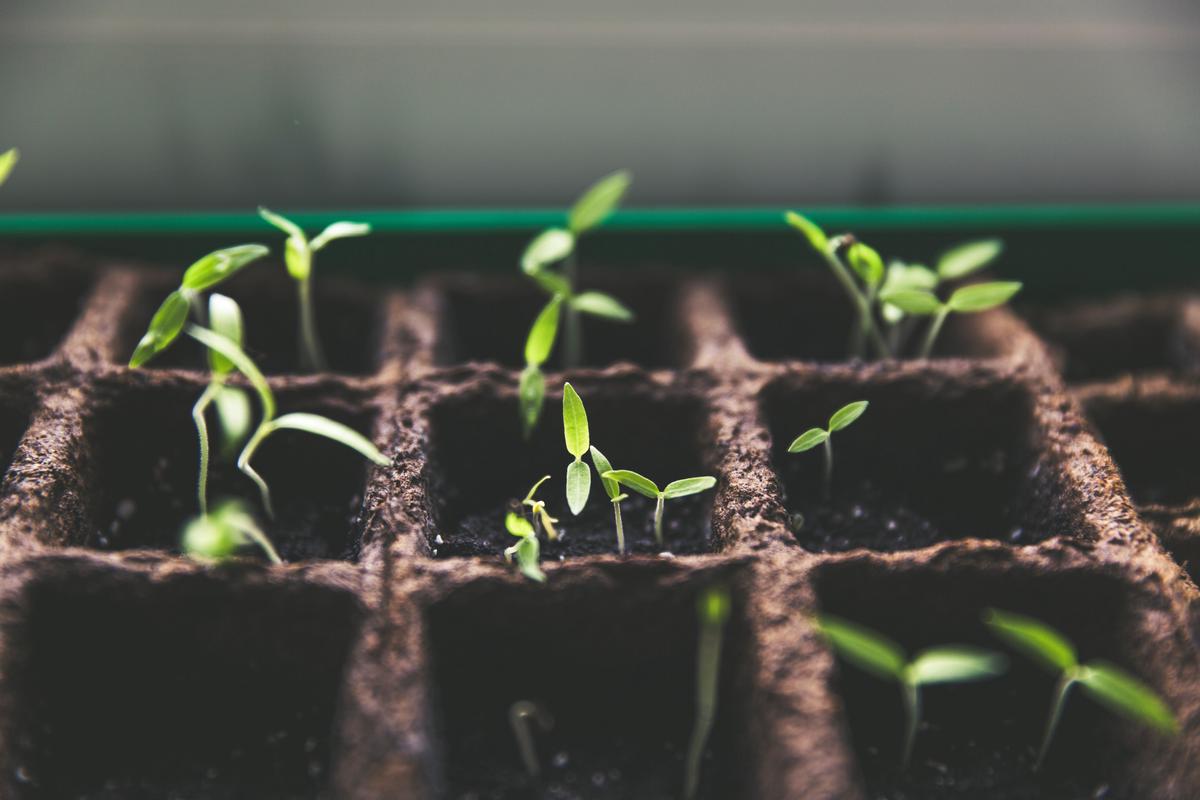Guide to Tomato Seed Germination Timeline

The miracle of life often begins with the smallest of elements – a seed. Among these, the tomato seed offers an intriguing glance into the mechanics of botany. Understanding seed germination forms the core of this empowerment, equipping you with a consolidated overview on a process that can be both enlightening and fascinating. This not just opens the gateway to a nuanced understanding of plant biology but enables an appreciation of why seeds germinate. The botanical idiosyncrasies of the tomato seed fuel this inquisitiveness, making it essential to delve into the seed’s inherent characteristics such as its size, preferred environment, and overall life cycle. These are key to comprehend the conditions under which it can successfully germinate.
Understanding Seed Germination
The Intricate Elegance of Seed Germination: A Deep Dive
The process of seed germination is nothing short of fascinating, and it’s an absolute gem that brings pure joy in the world of gardening. Familiarity with and appreciation for this seemingly minor process is important — it’s where big things in gardening start and it’s what keeps the growth cycle going.
Admittedly, germination may seem tricky, but once you understand the science behind it, there’s no stopping your gardening success. It’s a wonderful mix of art and science that takes patience, knowledge, and enthusiasm. This journey begins with a series of essential conditions; moisture, warmth, oxygen, and light or darkness, depending on the seed type.
Every seed has an embryonic plant waiting in dormancy. The absorption of water kick-starts the germination process, reawakening that dormant seed and prompting the enzymatic reactions necessary for growth. This fascinating process known as ‘imbibition’ triggers the seed’s metabolic mechanisms and begins the wonder of growth.
Temperature plays a key role too. Seeds need an optimal temperature range to fire up their metabolism; any deviation from this temperature range could hinder or even halt germination. Generally, most seeds do well in an agreeable room temperature, but there’s always beauty in getting to know the specific needs of every seed type.
Let’s not underestimate the power of oxygen; it’s not just human life that depends on it! A good supply of oxygen is necessary to support the respiration rate of the seed. What does this mean? Simply, it means the production of energy for growth. So, seeds need an airy and well-draining soil to ensure the right flow of oxygen.
The fourth variable, light or darkness, depends on the specific seed. Some seeds need direct light for germination, and need to be sown on the soil surface. Conversely, others require the cover of darkness and need to be sown deeper in the soil. Thankfully, seed packets typically come with this information, so it’s an easy call.
Understanding the entire process of seed germination is not just important for improving gardening skills, it’s essential for appreciating the intricate complexity of nature. This process, set off by a symphony of conditions, leads to the growth of plants that bring sheer beauty to our lives. It’s a gentle reminder of a seed’s resilience and determination as it navigates the delicate dance of life. Here’s to embracing the exciting challenge of seed germination and bringing more greenery into the world! Nurture every seed, and before long, those quiet whispers of growth will soon blossom into a triumphant gardening success. It’s not just about the science behind it; it’s about the joy and fulfillment that comes with it. Happy Gardening!

Tomato Seed Characteristics
Decoding Tomato Seed Germination – A Deeper Dive!
Excitement about seed germination isn’t just about witnessing the miracle of life, it’s also about understanding the science behind it to bolster our success rates. Now that we’ve covered the essential principles from moisture balance to role of light and temperature, let’s get into the nitty-gritty, and specifically, tomato seeds!
First and foremost, a tomato seed has its unique properties! Each seed is encased in a tough outer shell called the testa or seed coat. The testa acts as a protective shield against the external environment. The thickness and hardness of the testa can affect germination as a thicker coat generally means it takes a longer time for water to infiltrate!
On a microscopic level, tomato seeds contain a cocktail of chemicals – both hormones and inhibitory chemicals. Gibberellins (a class of plant hormone) are pertinent to initiating the germination process, while abscisic acid acts like a growth inhibitor. The balance between these two chemicals controls the timing of germination. After all, they don’t want to sprout when conditions aren’t right!
Variety too plays a pivotal role in seed germination. Varieties of tomatoes originate from different regions around the world, and each comes with its own set of characteristics. Some seeds are adapted to cold conditions while others need intense heat. Knowing the variety of your tomato seeds can help you better tailor the germination environment, enhancing the success rates!
While we’ve covered temperature before, it plays such a critical role in tomato seed germination that it merits a little more attention. Tomato seeds prefer a range of 70-80 degrees Fahrenheit for optimal germination. Too cold, they’ll struggle to sprout, too hot, they might meet an untimely demise!
Now let’s not forget the role of seed age in germination. It’s a common misconception that old seeds never germinate. While germination rates do decrease with age, it’s surprising how viable old seeds can be under the right conditions. Proper storage – cool, dry, and dark – is key to preserving their viability, turning these forgotten seeds into garden bonanzas!
That’s not all, tomato seed germination can also be influenced by several external factors such as diseases and pests. Pathogens, notably fungal diseases, can make it difficult for seeds to sprout and early seedlings to thrive. That’s why it’s crucial to start with clean, disease-free seeds and use a sterile growing medium!
Lastly, the time a seed spends in darkness versus light can play a role in its germination. Tomato seeds specifically are indifferent to light, they can germinate in both conditions. However, once the young seedlings pop their heads out, they need ample light to kick-start photosynthesis!
In essence, tomato seed germination is a complex dance of intrinsic characteristics, environmental interplay, and careful nurturing. Understanding the idiosyncrasies of these humble tomato seeds can truly elevate our gardening experience to the next level!

Photo by markusspiske on Unsplash
Optimal Conditions for Tomato Seed Germination
Now, let’s dive into the world of tomato seeds and their optimal germination conditions! Anyone with a green thumb knows that tomato plants are a favorite in gardens large and small. But did you know that these plants have some unique quirks when it comes to getting those seeds to sprout?
Firstly, tomato seeds have an optimal germination temperature of around 70 to 80 degrees Fahrenheit. While they can sprout in cooler conditions, it’ll take significantly longer and success rates will decrease. That’s why many gardeners choose to kickstart their tomato seeds indoors during colder months, ensuring a warmth blanket that newborn tomatoes crave.
One fascinating property about tomato seeds is the role hormones play in germination. Tomato seeds are caressed by two primary hormones: abscisic acid (ABA) and gibberellins (GA). ABA in the seed typically acts as an inhibitor, putting a halt on the germination under less-than-ideal conditions. In contrast, GA acts as a booster, encouraging the seed to sprout when conditions tick the right boxes. The permit to sprout is not granted until the balance shifts to favor the encouraging GA hormone.
The sticking point here is that each variety of tomato seed has its unique hormone balance, and thus, its own preferred conditions for sprouting. An heirloom variety could require different environmental cues compared to a hybrid one, illustrating the diversity within the single species of tomatoes. Therefore, always research the specific needs of the variety you’ve chosen.
While temperature plays a vital role, it’s crucial not to oversee the importance of seed viability. Tomato seeds, if stored properly, can remain viable for up to six years! Darkness, dryness, and cooler temperatures make for ideal storage conditions and can significantly influence the germination rates of even older seeds.
As much as tomato seeds might be determined to sprout under optimal conditions, they face threats from diseases and pests that can hinder the germination process. Encountering pathogens like bacteria can spell disaster. Seeds can be treated with a mild hydrogen peroxide solution to ward off such threats and ensure they get a fair shot at life.
Lastly, let’s look at how light influences tomato seed germination. Unlike some seed variants that require light to germinate, tomato seeds prefer the dark. This is why sowing them a quarter of an inch into the soil aids in successful germination, providing them with the dim conditions they enjoy.
Unlocking the germination mystery allows us to cultivate healthy tomato plants with ease. Whether you’re a newbie or seasoned gardener, knowing what works best for your tomato seeds can boost your harvest and add an extra layer of satisfaction to your gardening adventures.

Photo by mockupgraphics on Unsplash
Having explored the uniqueness inherent in tomato seed, we proceed further to encapsulate the various conditions under which such a seed thrives to germinate. Optimal conditions for tomato seed germination forms the crux of this understanding. Every requirement, whether it’s the ideal temperature, optimal moisture levels, right soil pH, or the necessary light conditions, plays a vital role in a successful germination process. Comprehending the average germination period offers an insightful lens to appreciate the stages of life embarked upon by each tiny seed. This knowledge brings us closer to understanding the broader tapestry of life that is woven by the simple act of germination.



